Zinnias in July: Cultivating My Own Variety
I’ve been crossbreeding cactus-type dahlias for many years, and each year brings new surprises. Here’s my progress so far this year.

This year, I moved to Missouri, uncertain how the zinnias I’ve been carefully crossbreeding for years would fare. One great thing about zinnias is that they tend to thrive almost everywhere, which explains why every garden center always has zinnia seeds for sale.
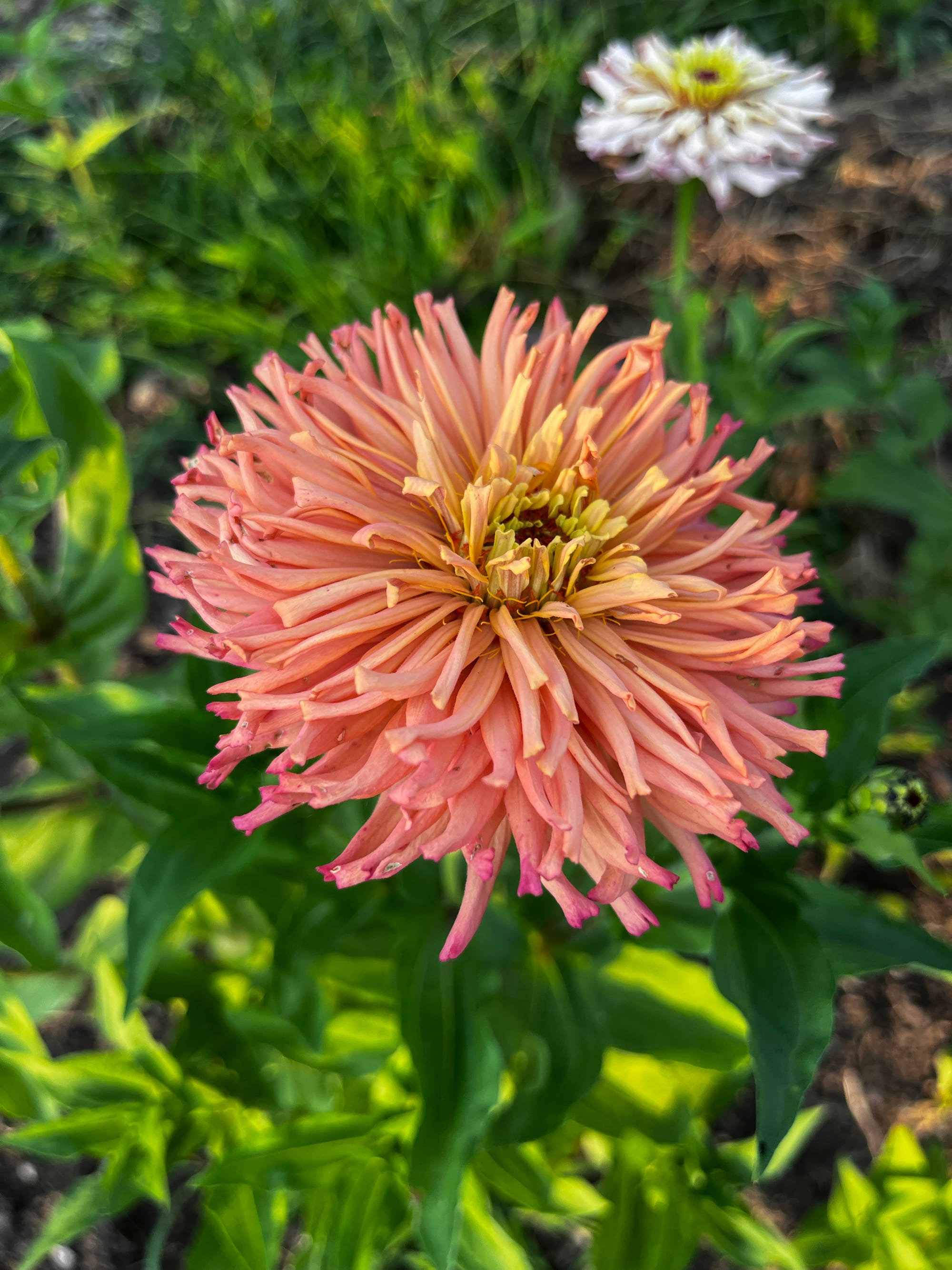
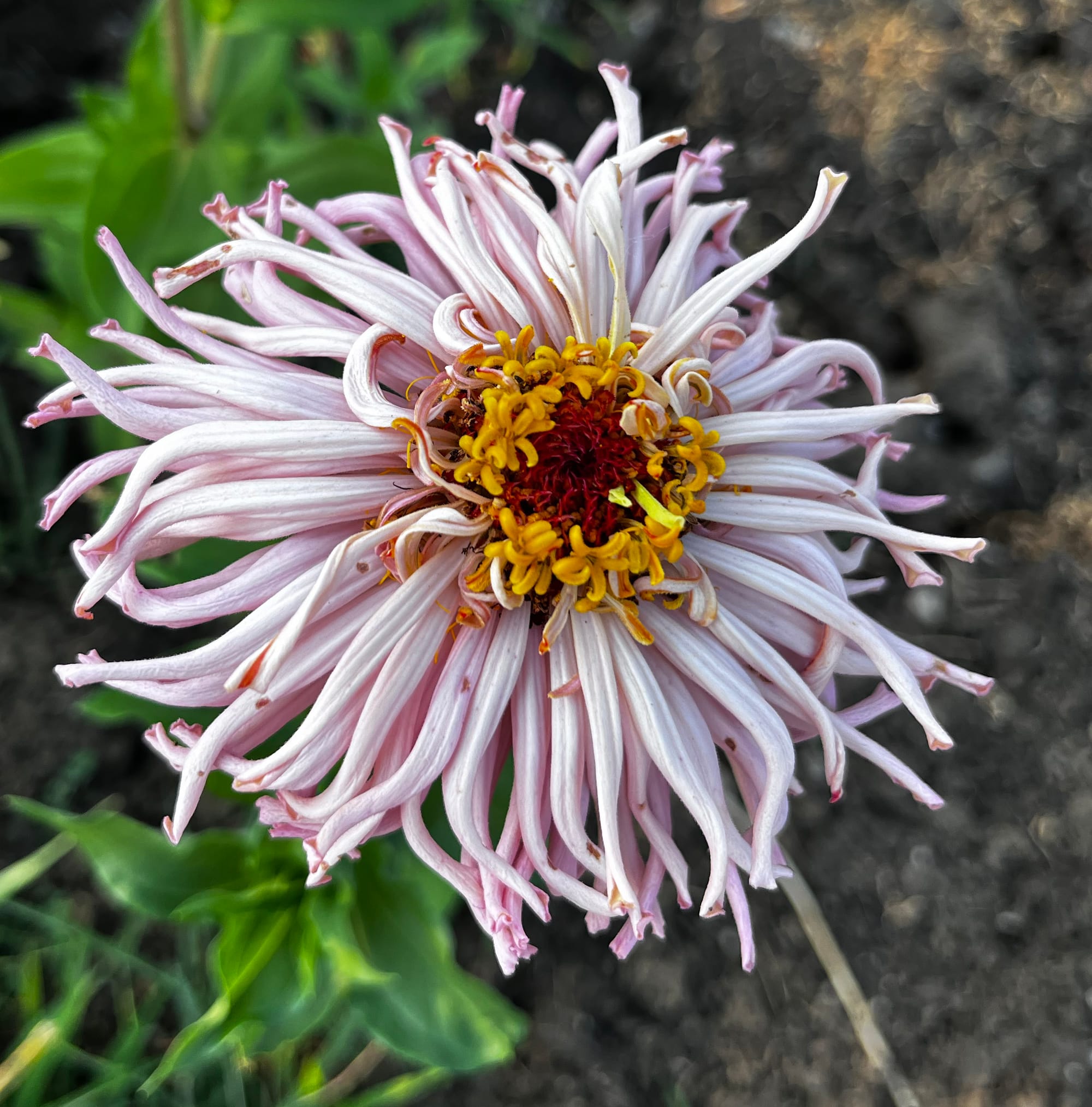
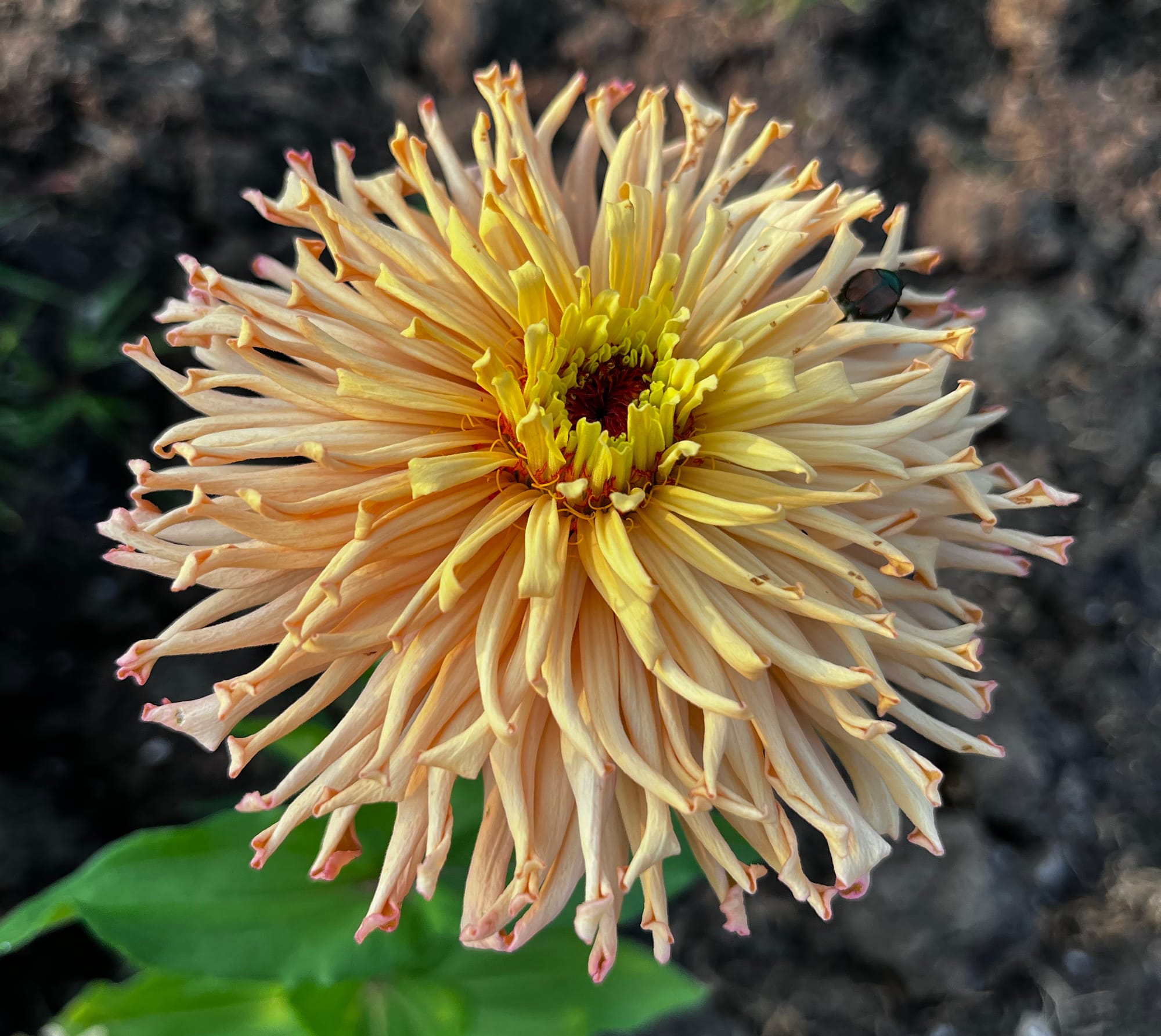
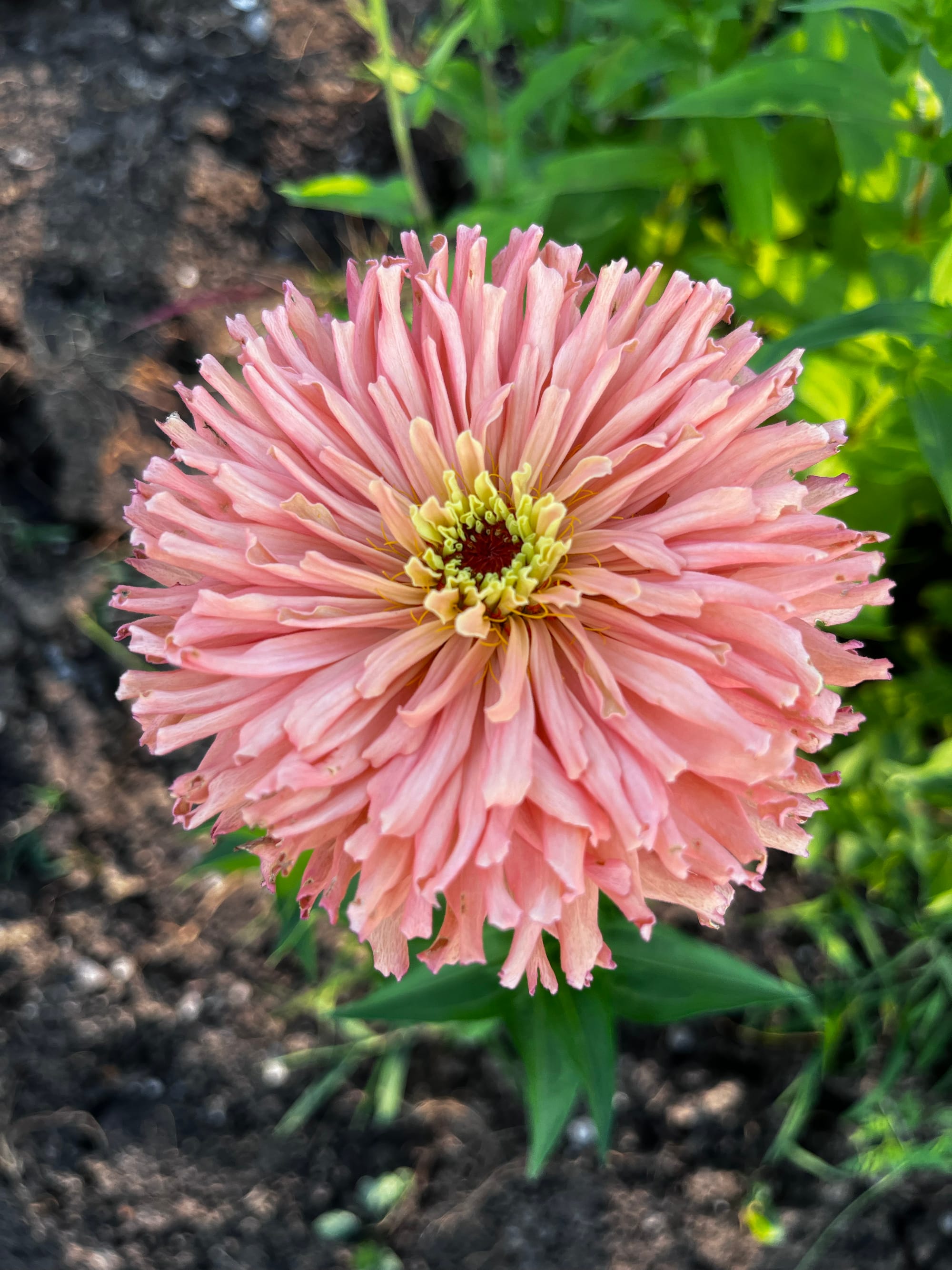
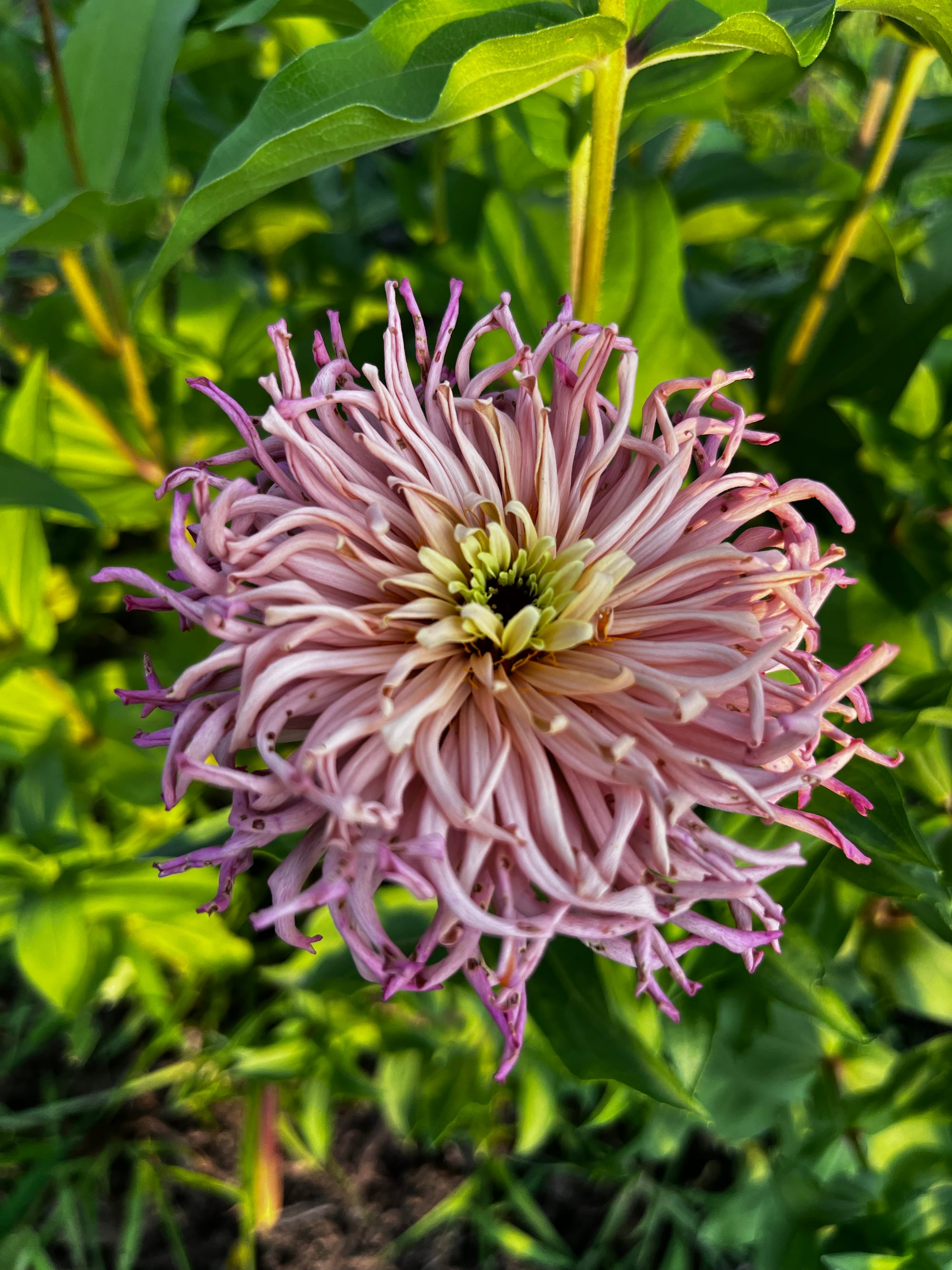
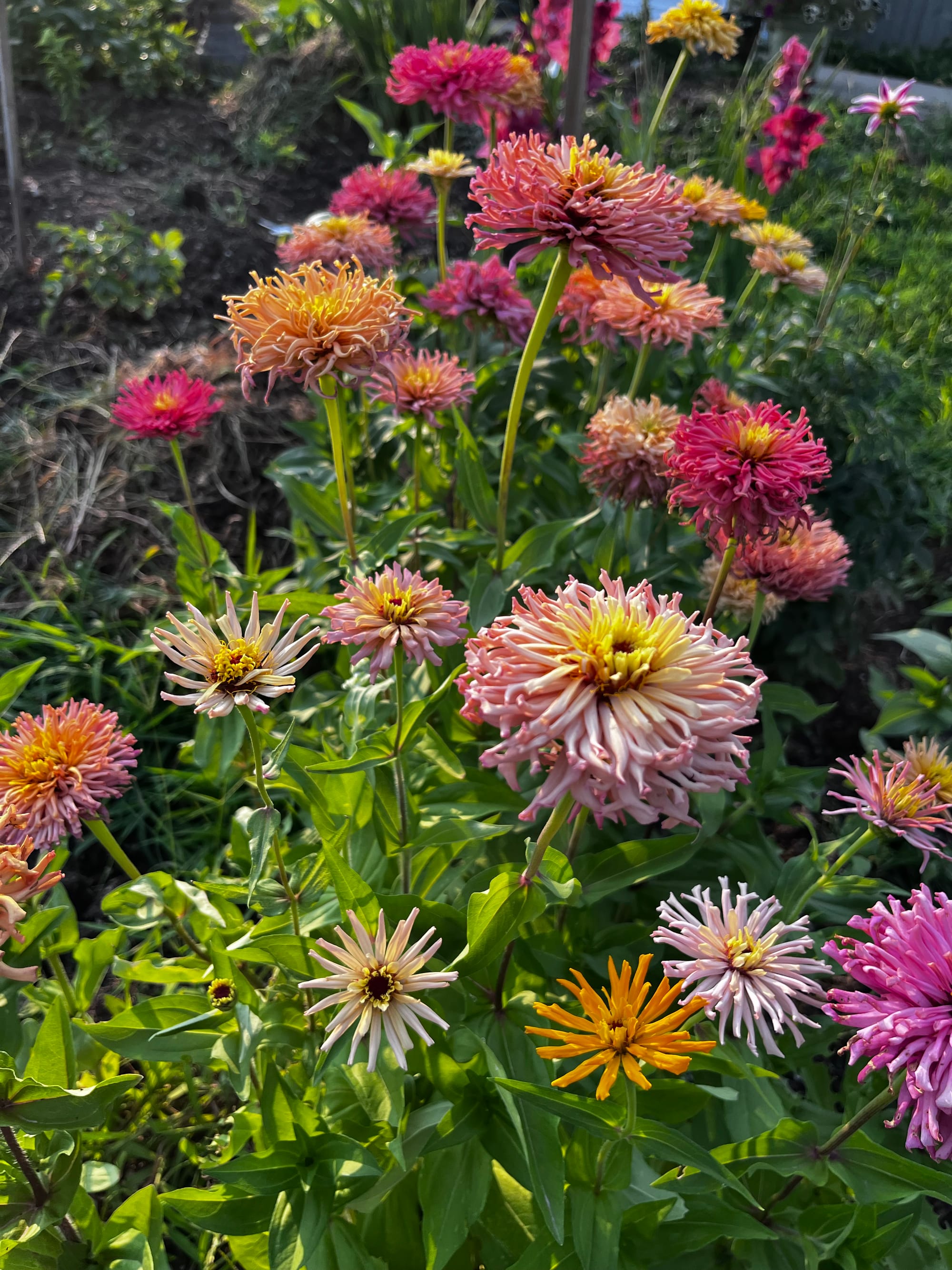
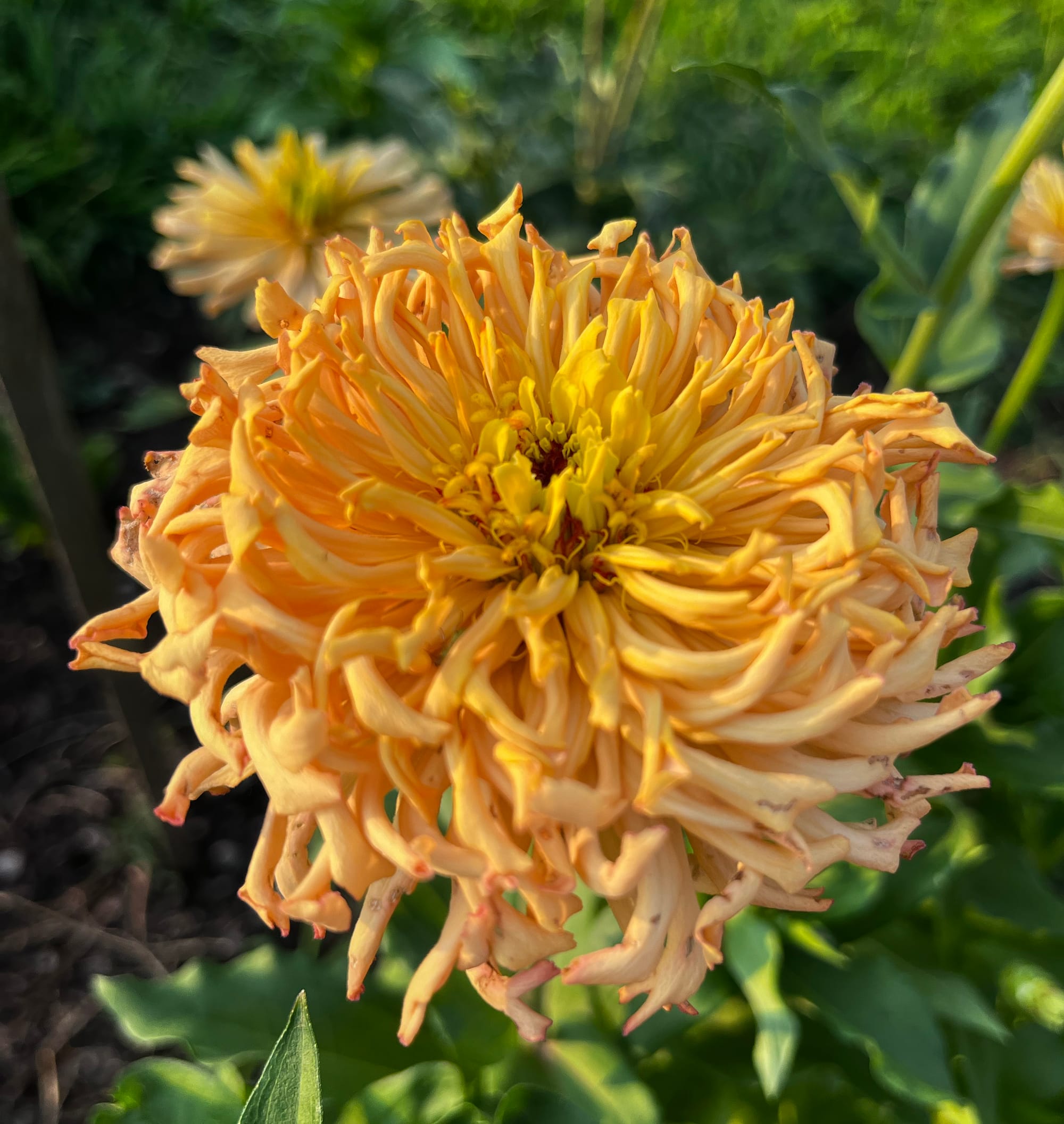
By the way, you can read more about my zinnias at this link. As they are in full bloom, I am always observing the flowers and selecting those that stand out for various reasons, such as:
- Large bloom size
- Sturdy stem to support the bloom
- Attractive color (I tend to avoid the overly bright Crayola colors found in standard zinnias, though some of these colors slip in and often look great. I prefer good pastel colors or two-tone variations.)
- Interesting petal shapes (I like unique, odd, shaggy, or wispy petal shapes.)
I mark any blooms fitting these descriptions by placing a piece of tape or a tag around their stem. I save these blooms for seeds, which are mostly open-pollinated by whatever the bees have decided. If a plant produces flowers I don't like, I usually remove it to prevent it from crossing with anything else.
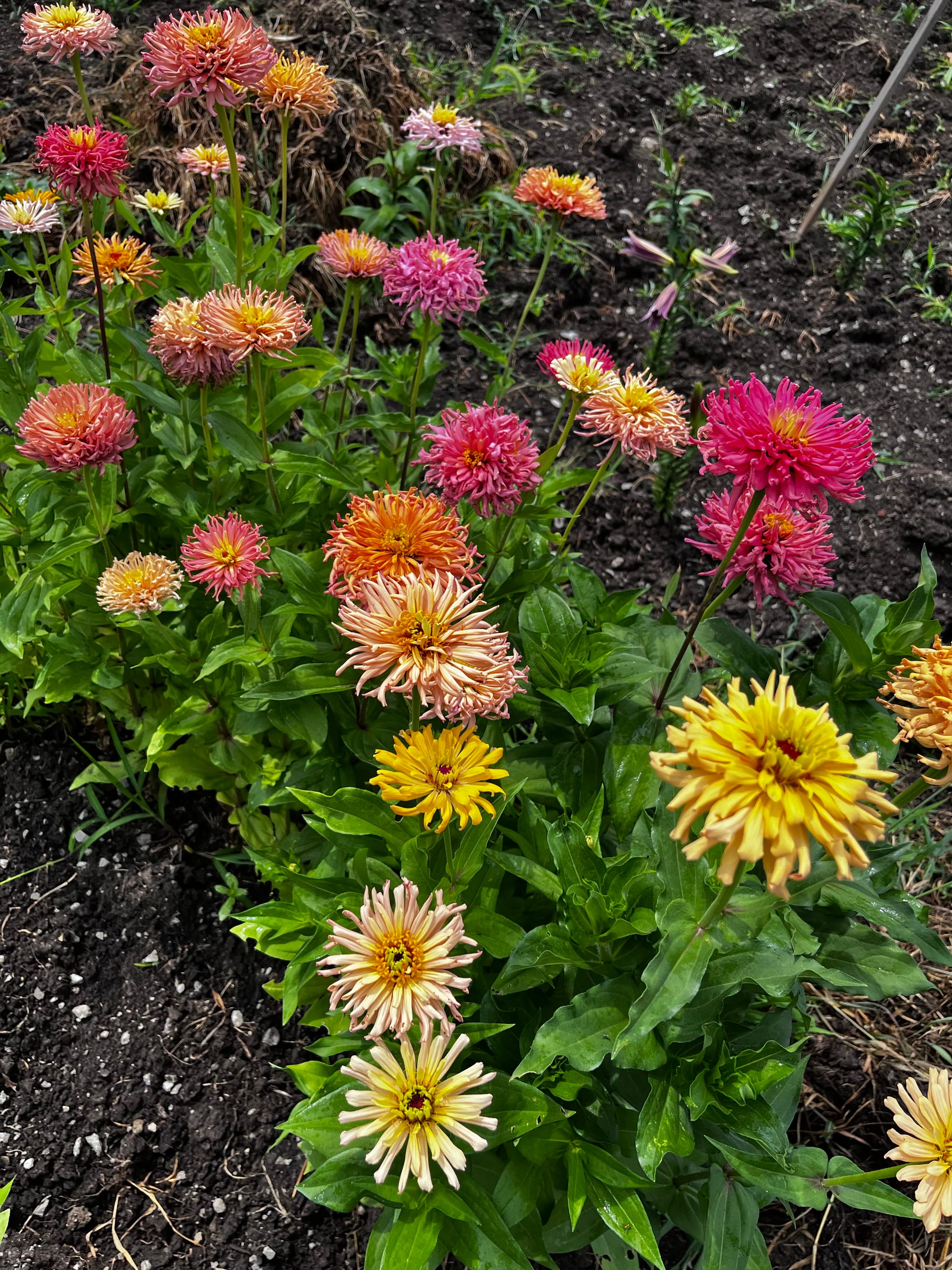
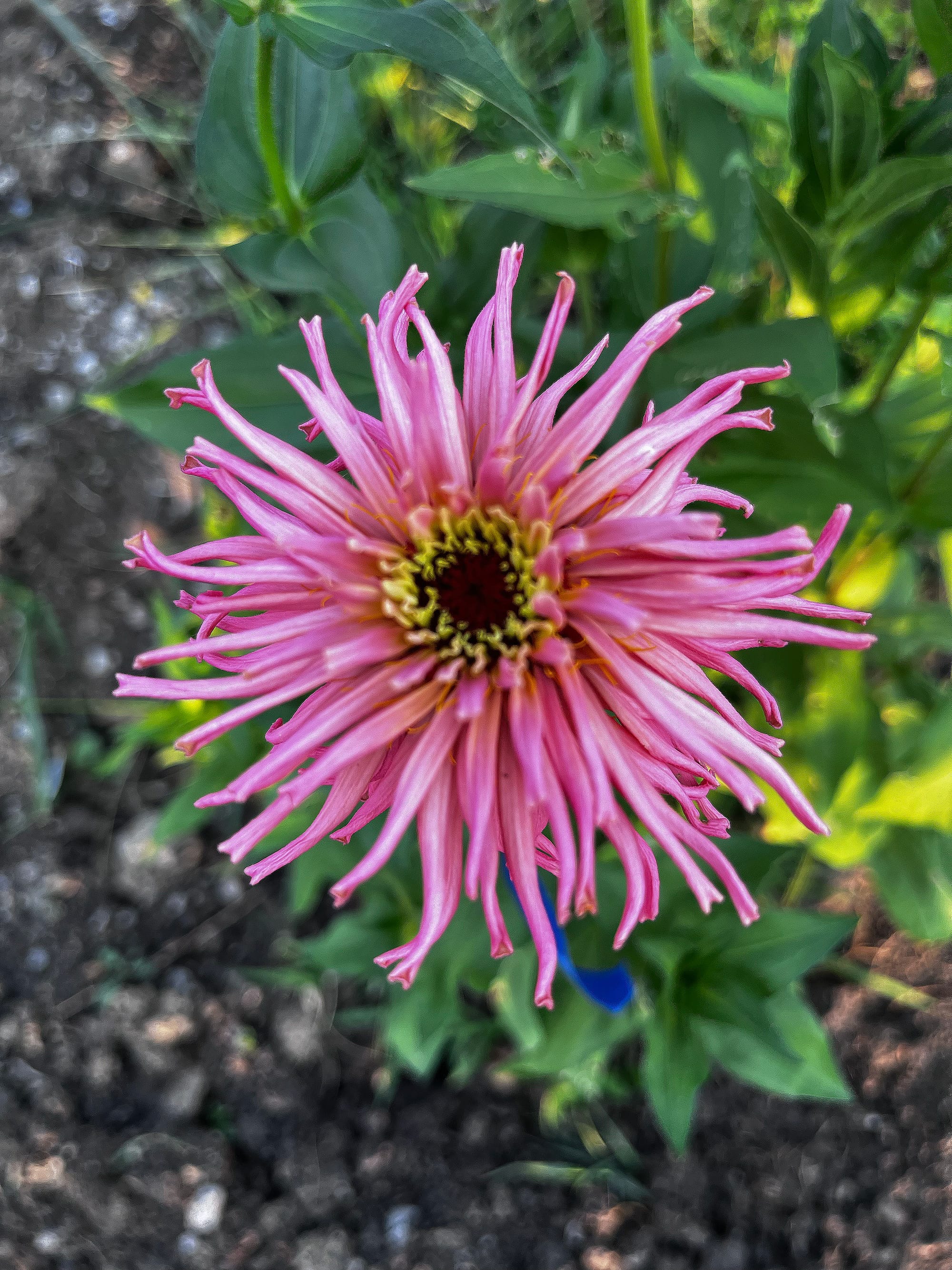
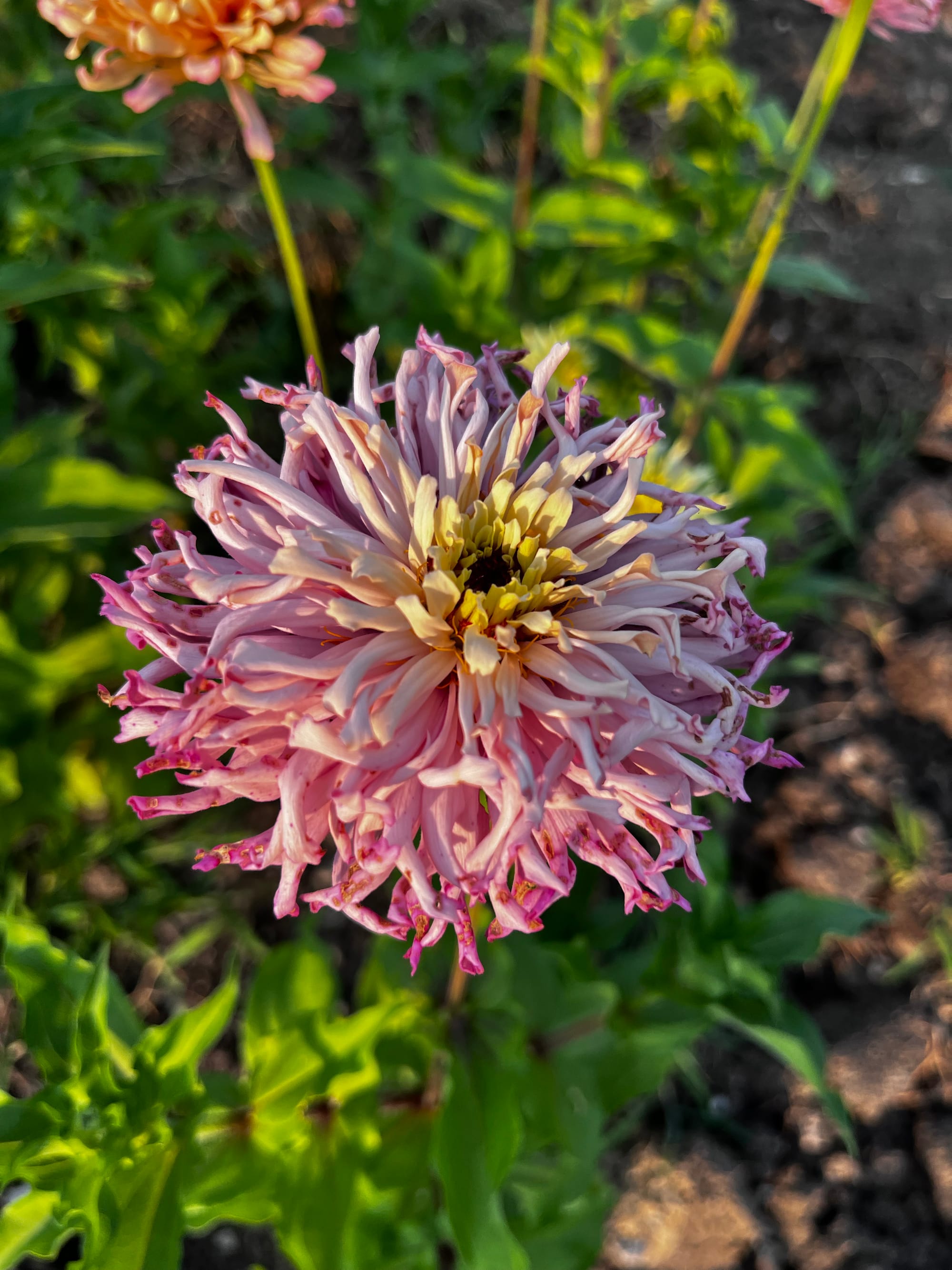
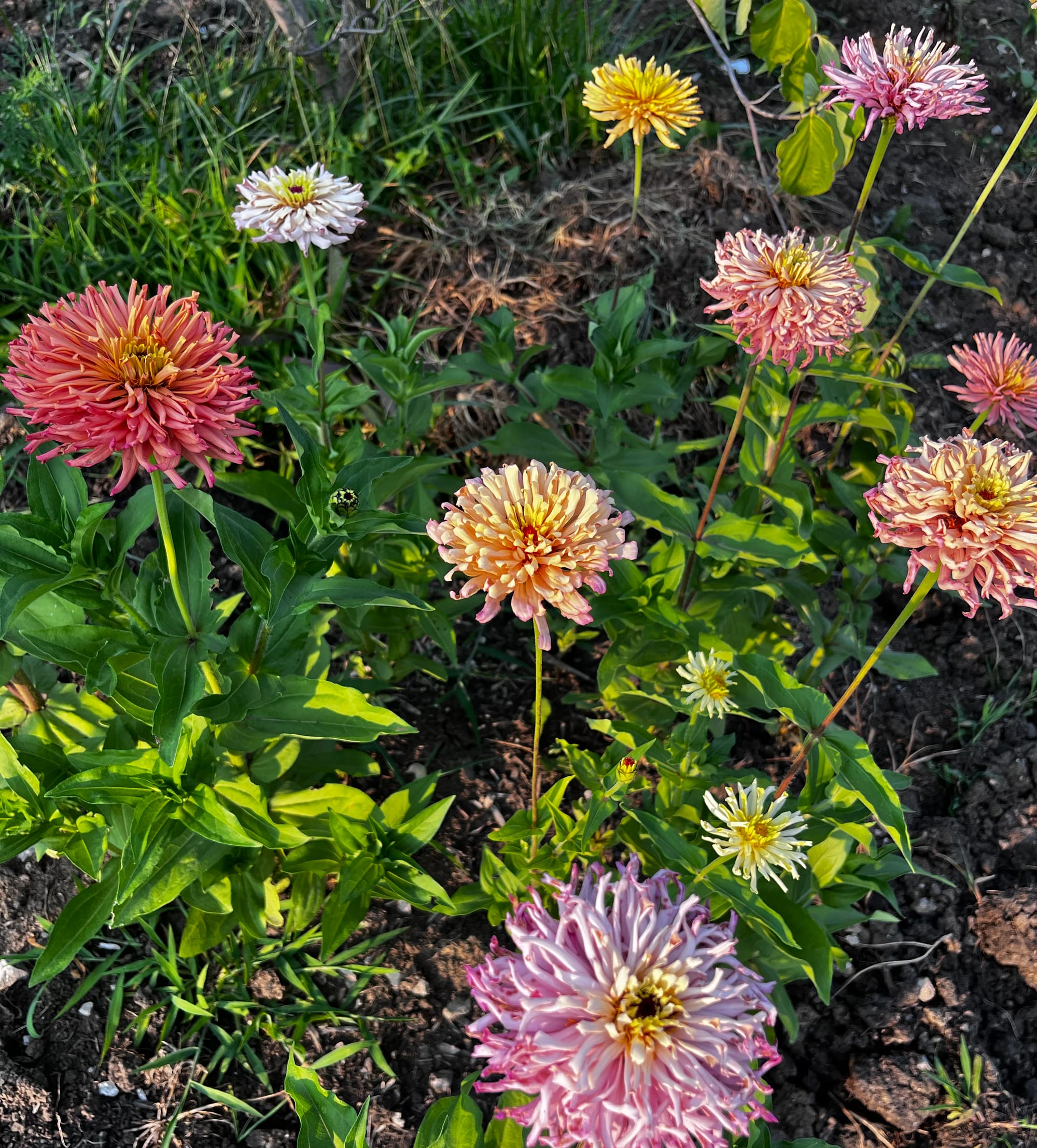
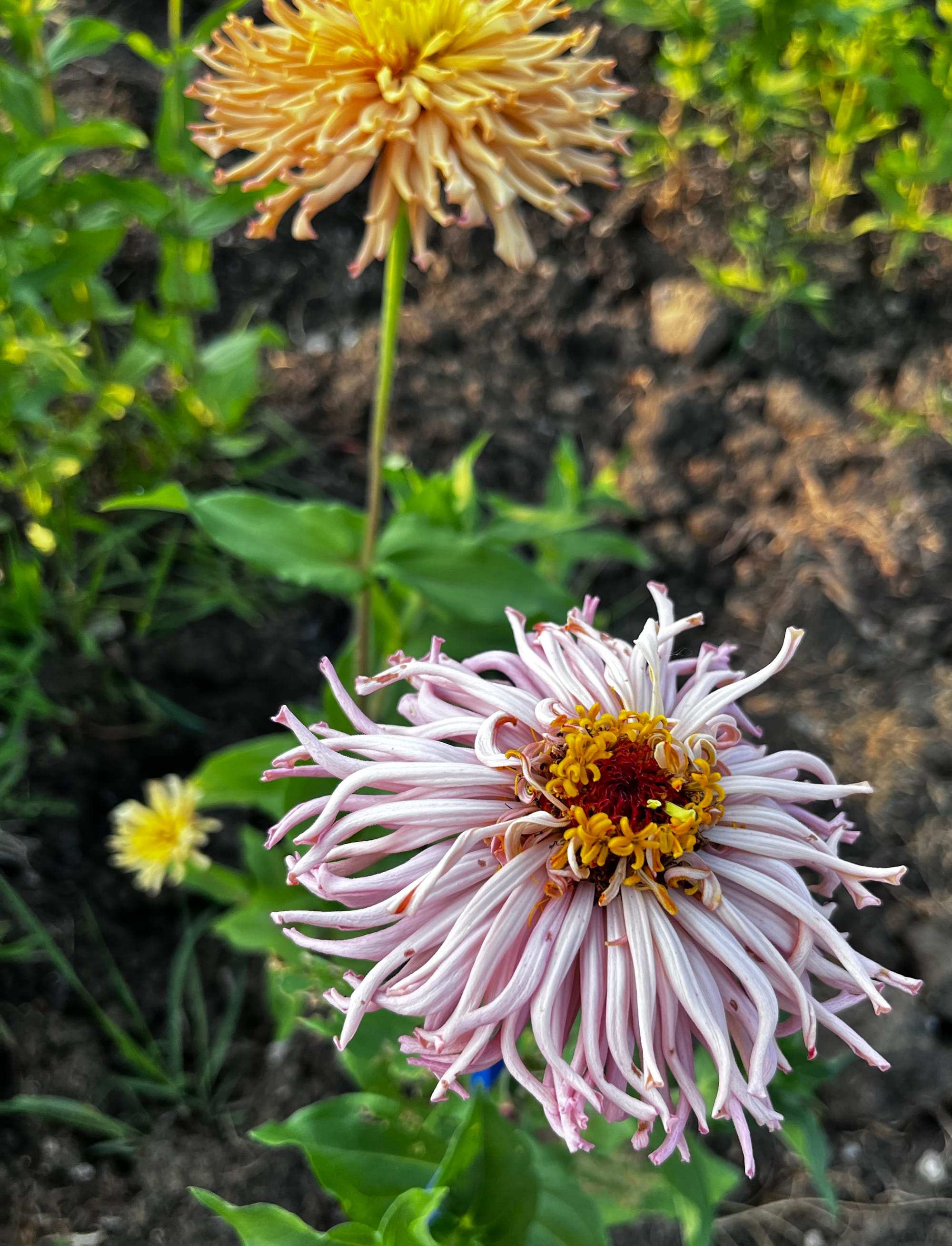

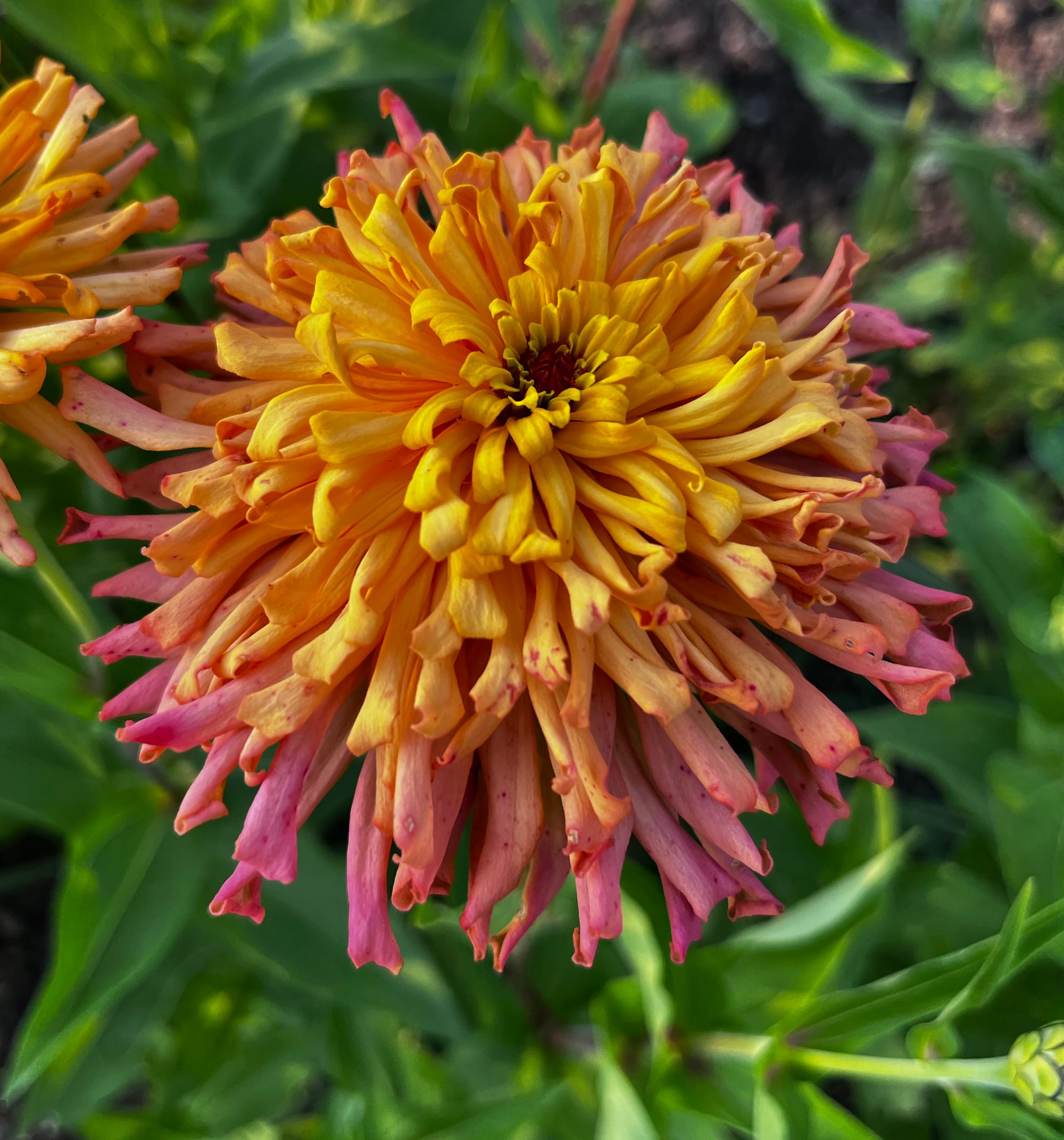
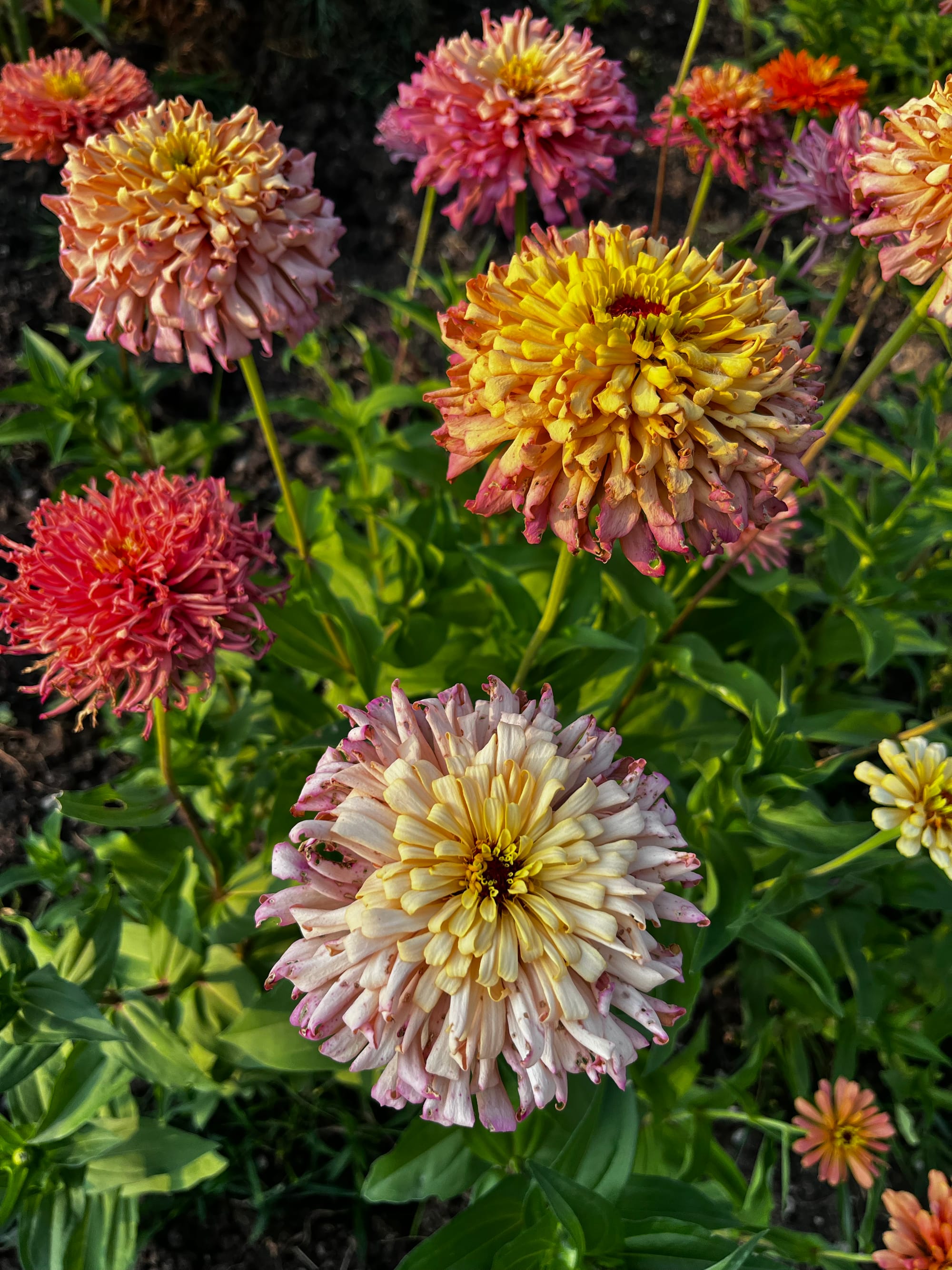
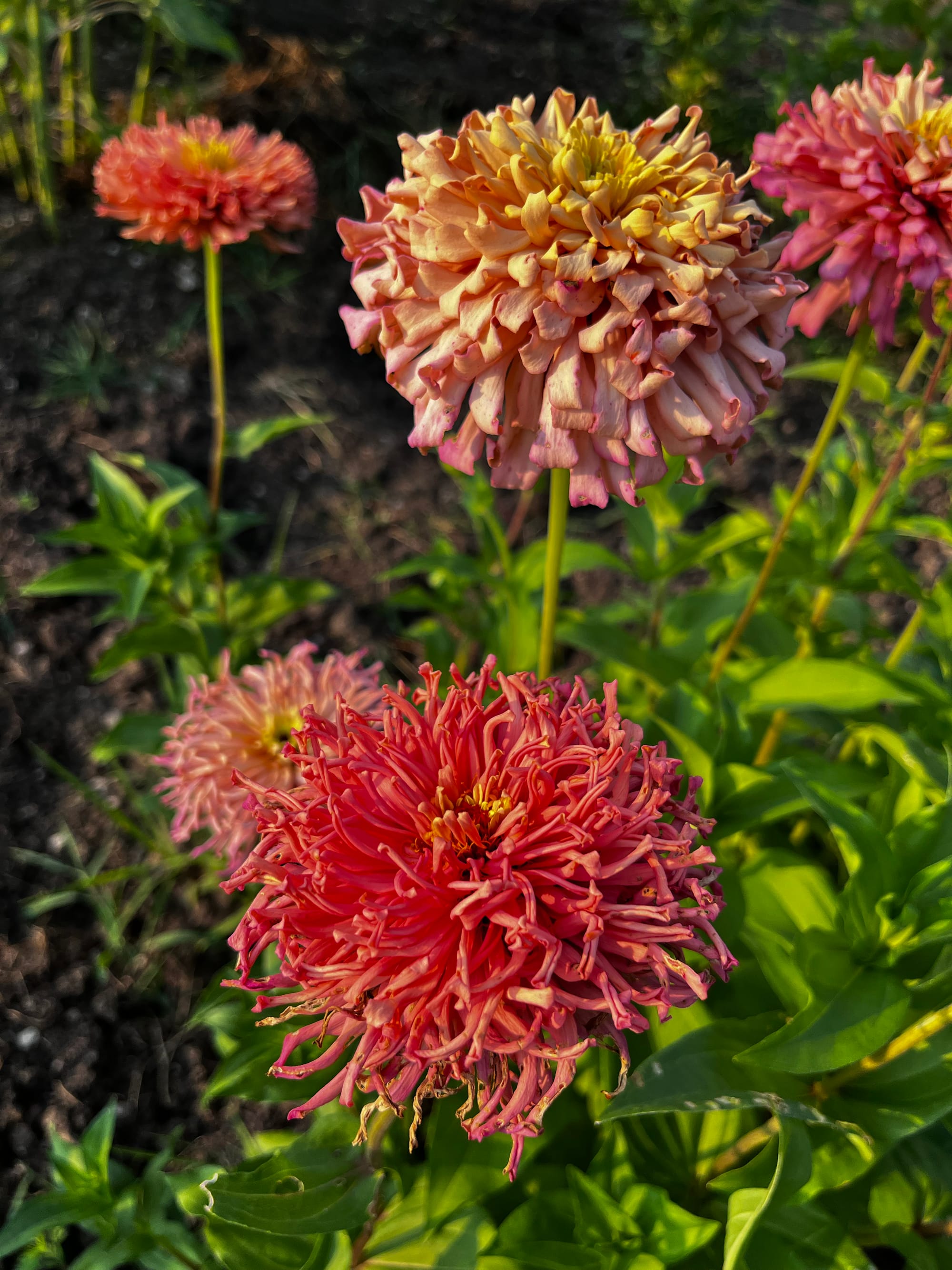
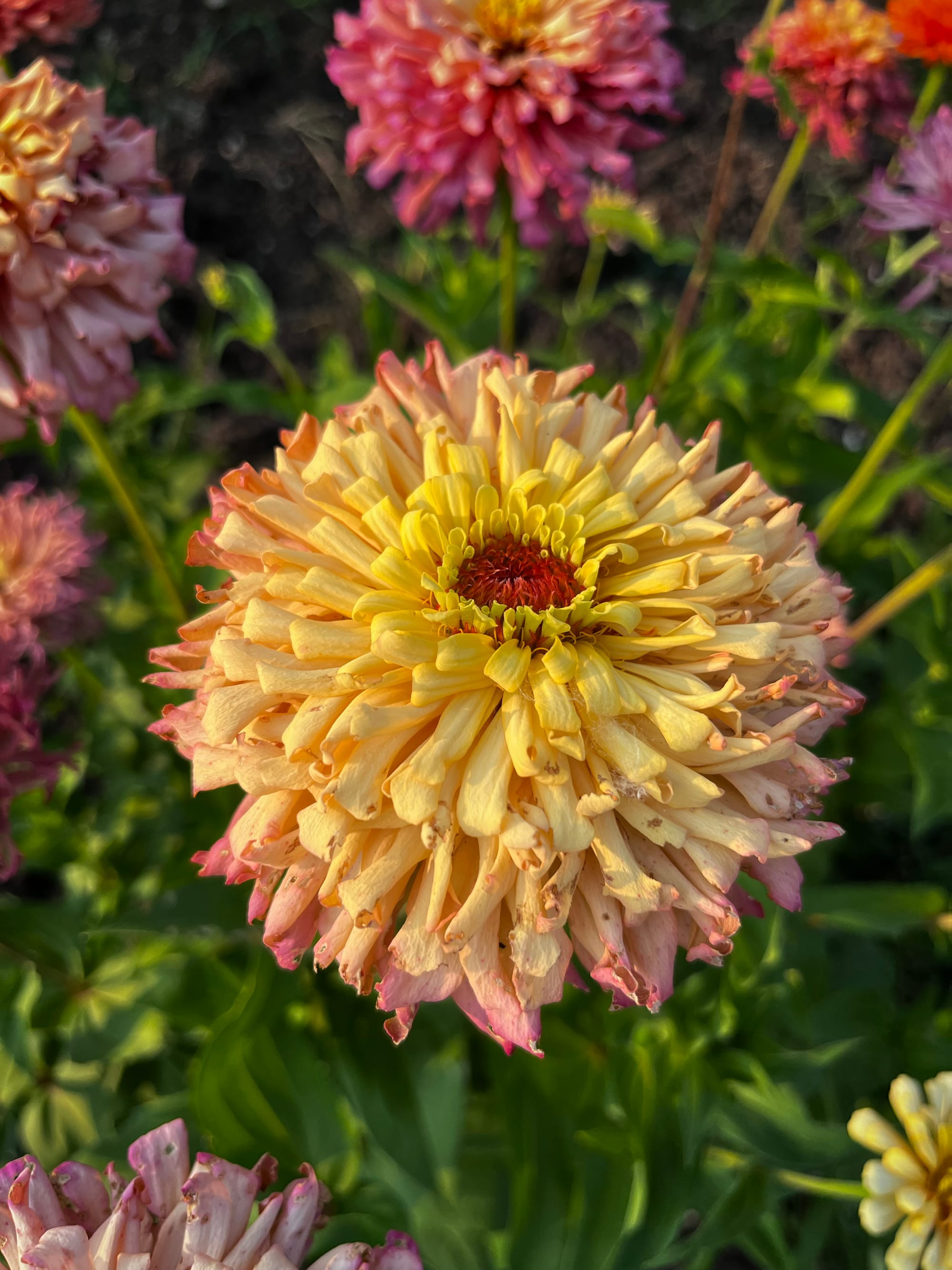
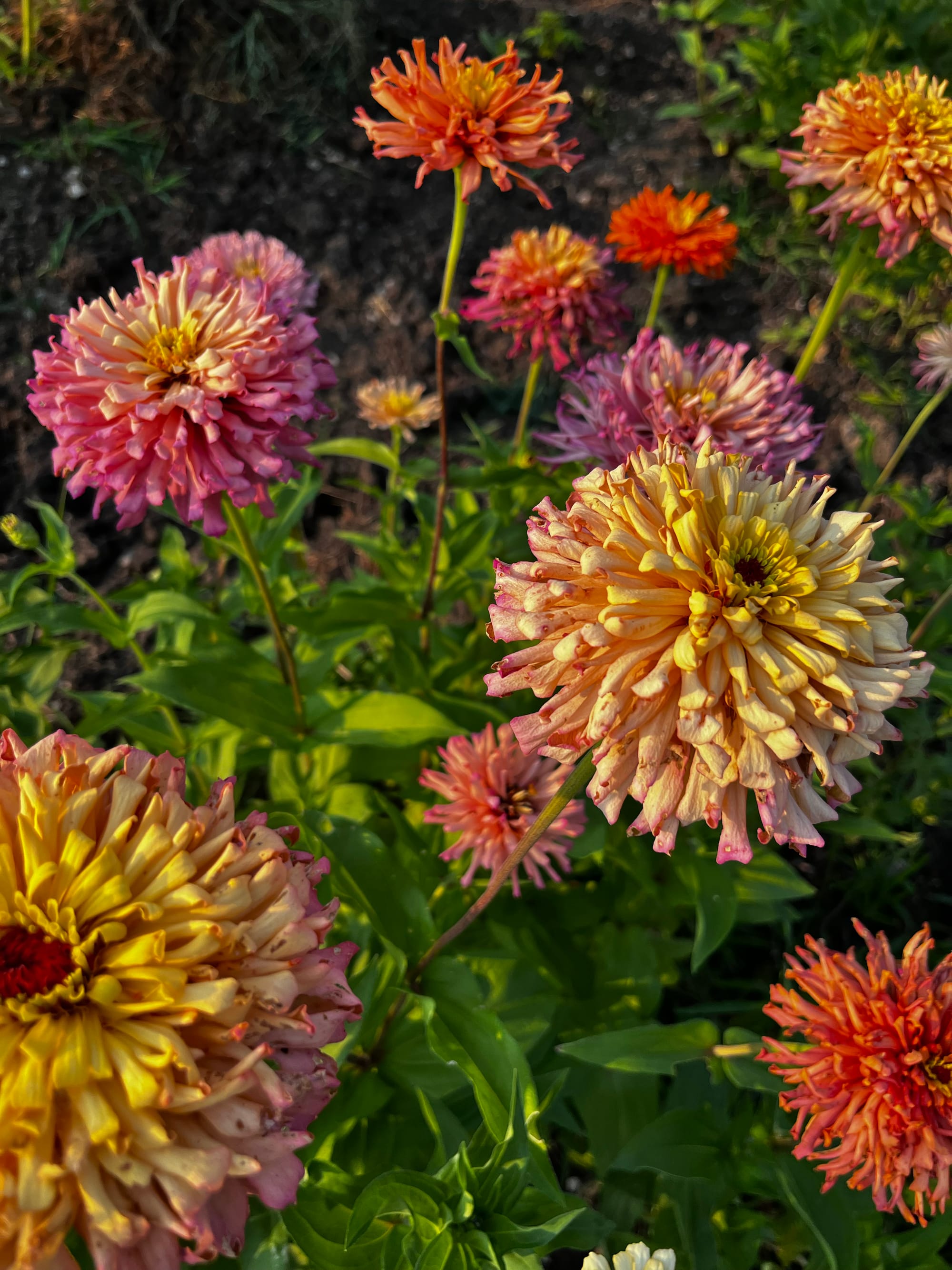
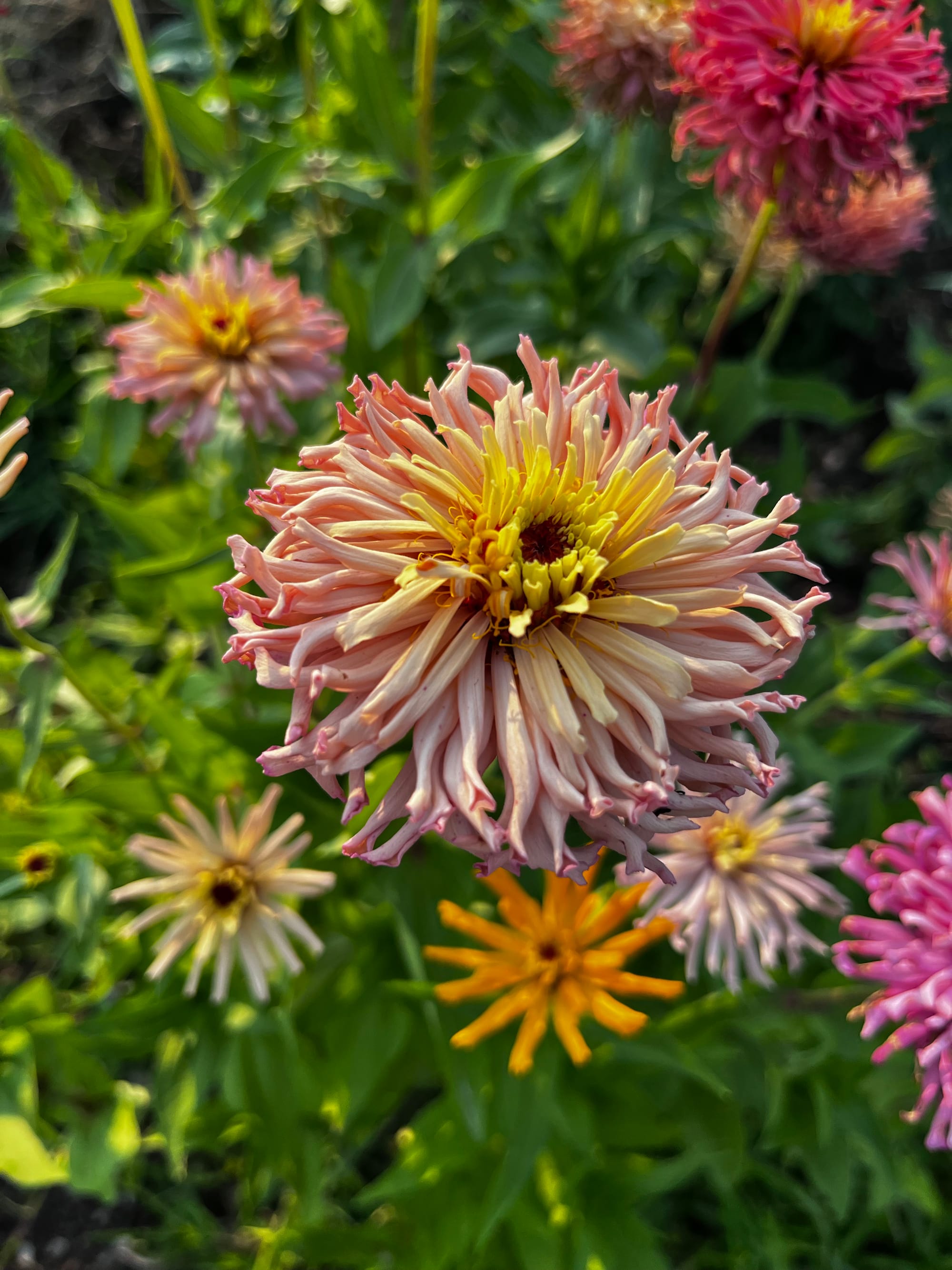
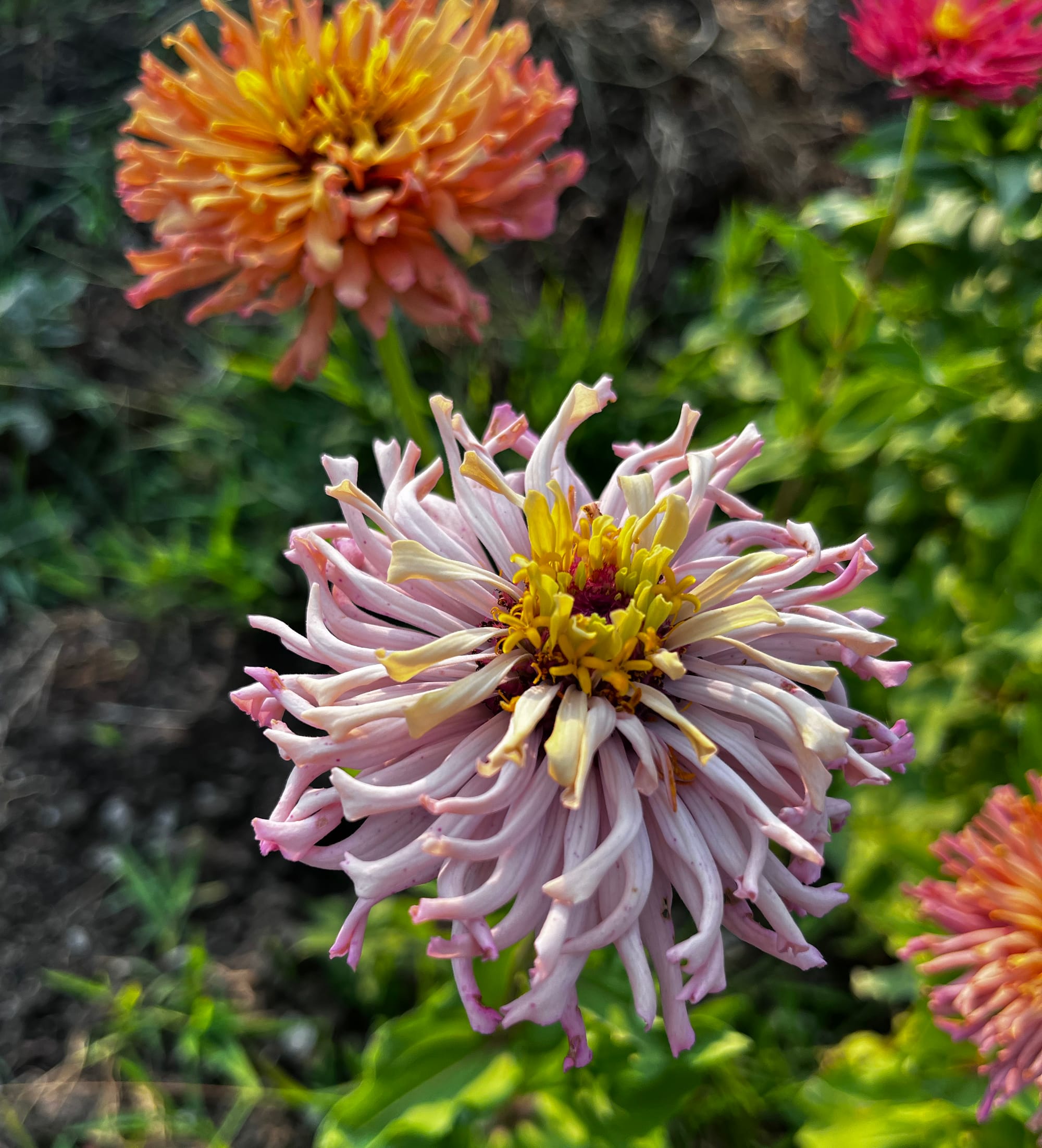
The blooms often start out smaller early in the season and gradually increase in size over a week or two. Every year, I panic during the first blooming week when I see many small, simple flowers that don't look promising. Then, as the season progresses, they begin to put on a show.

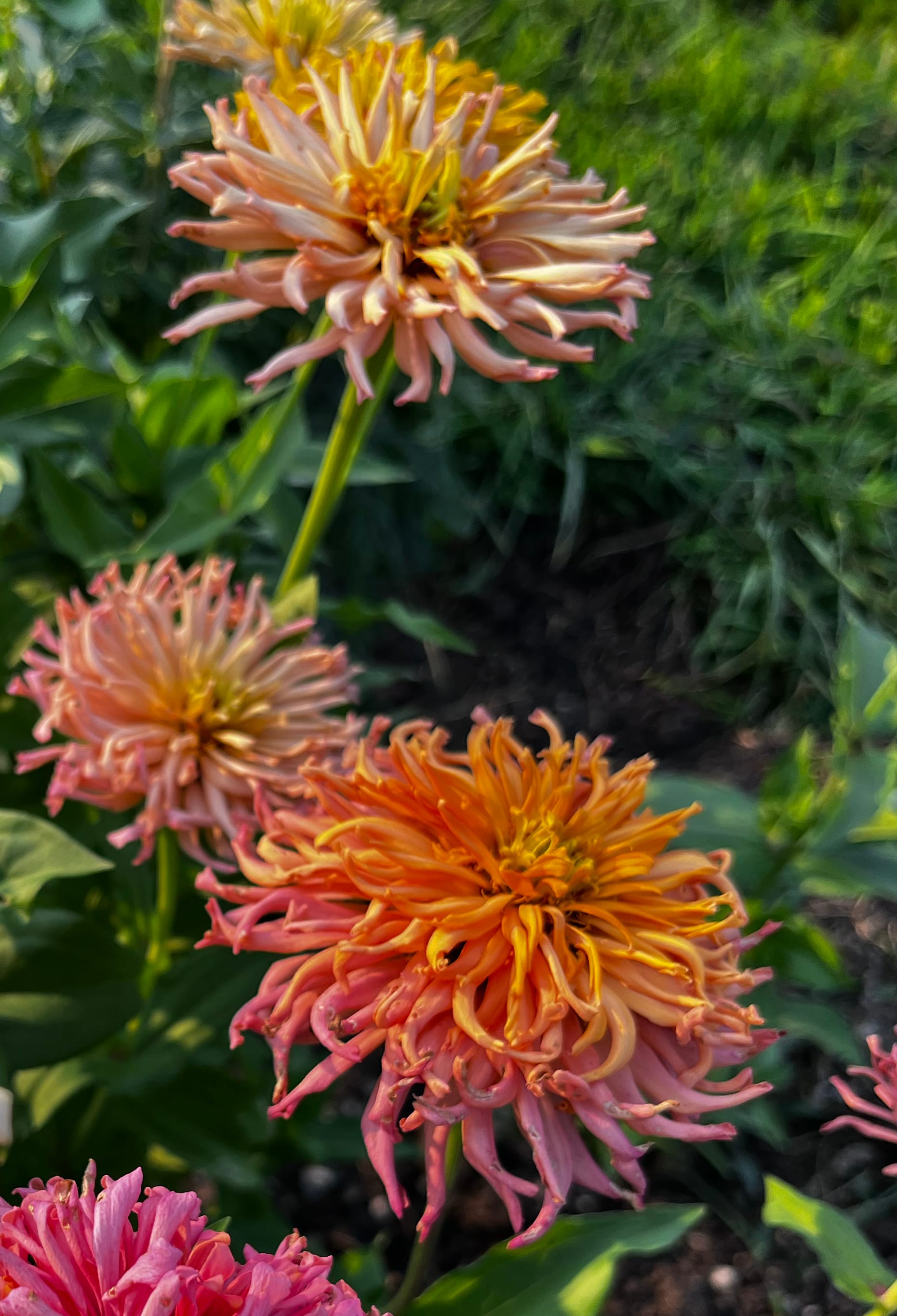
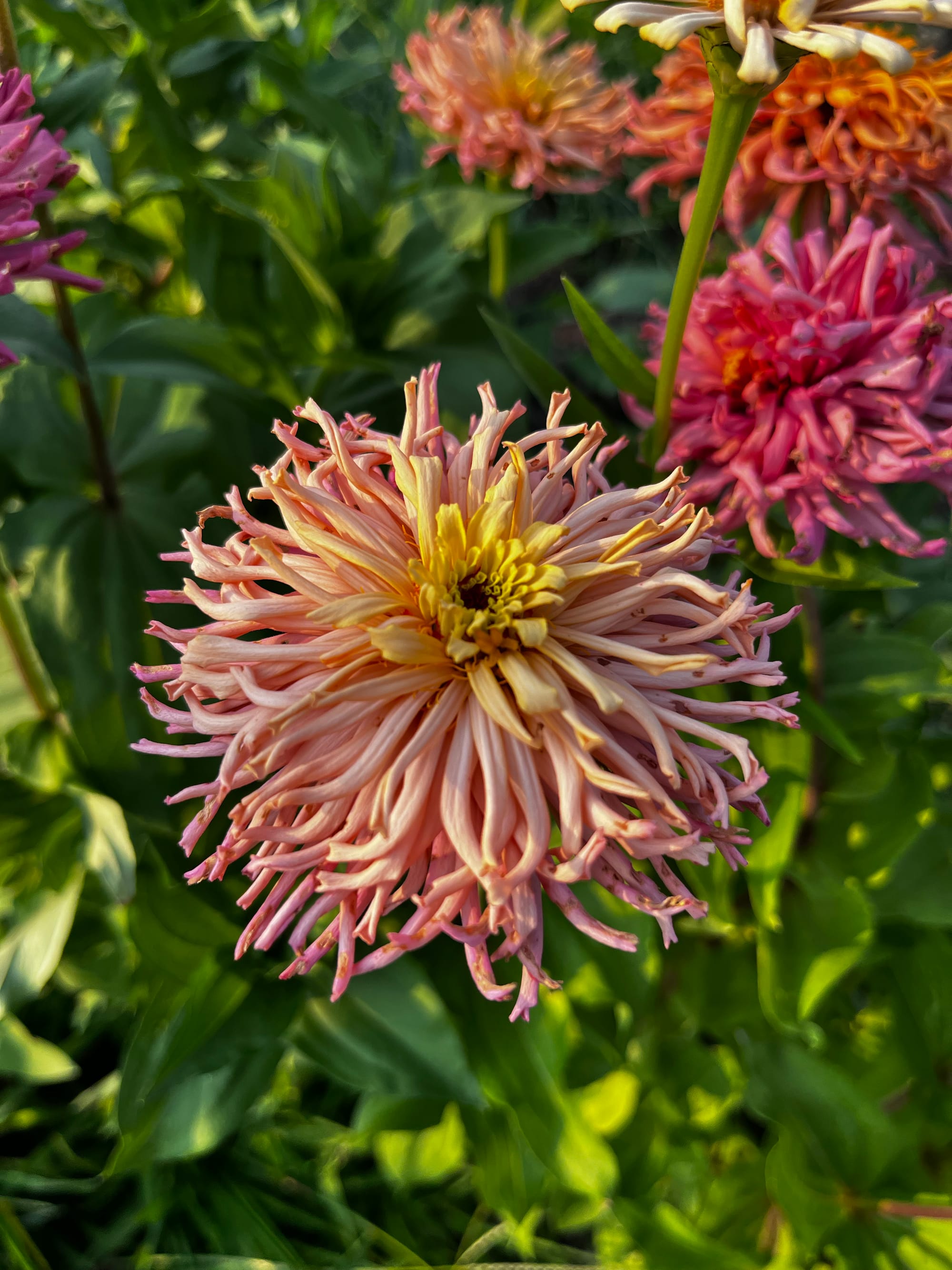
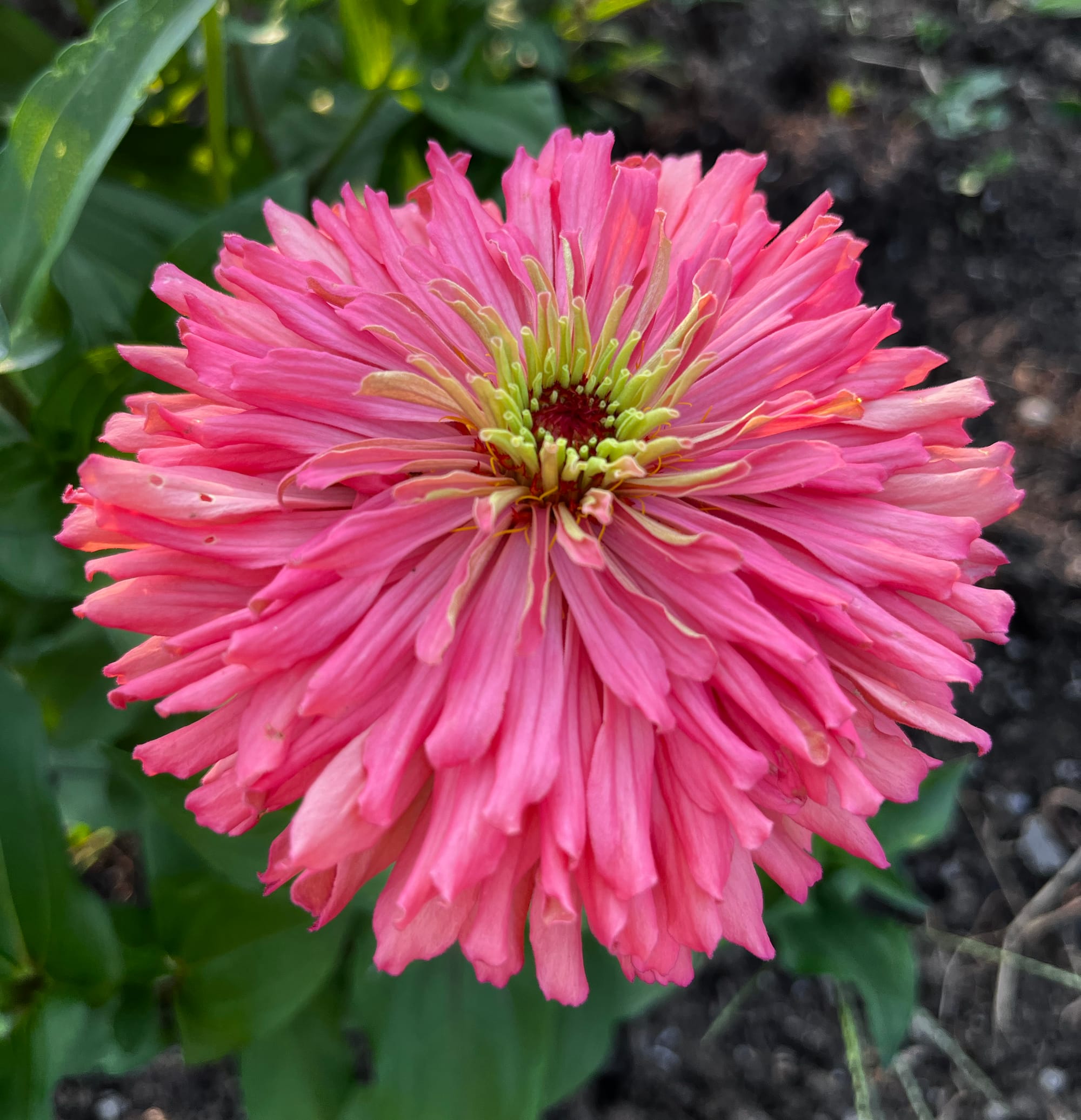
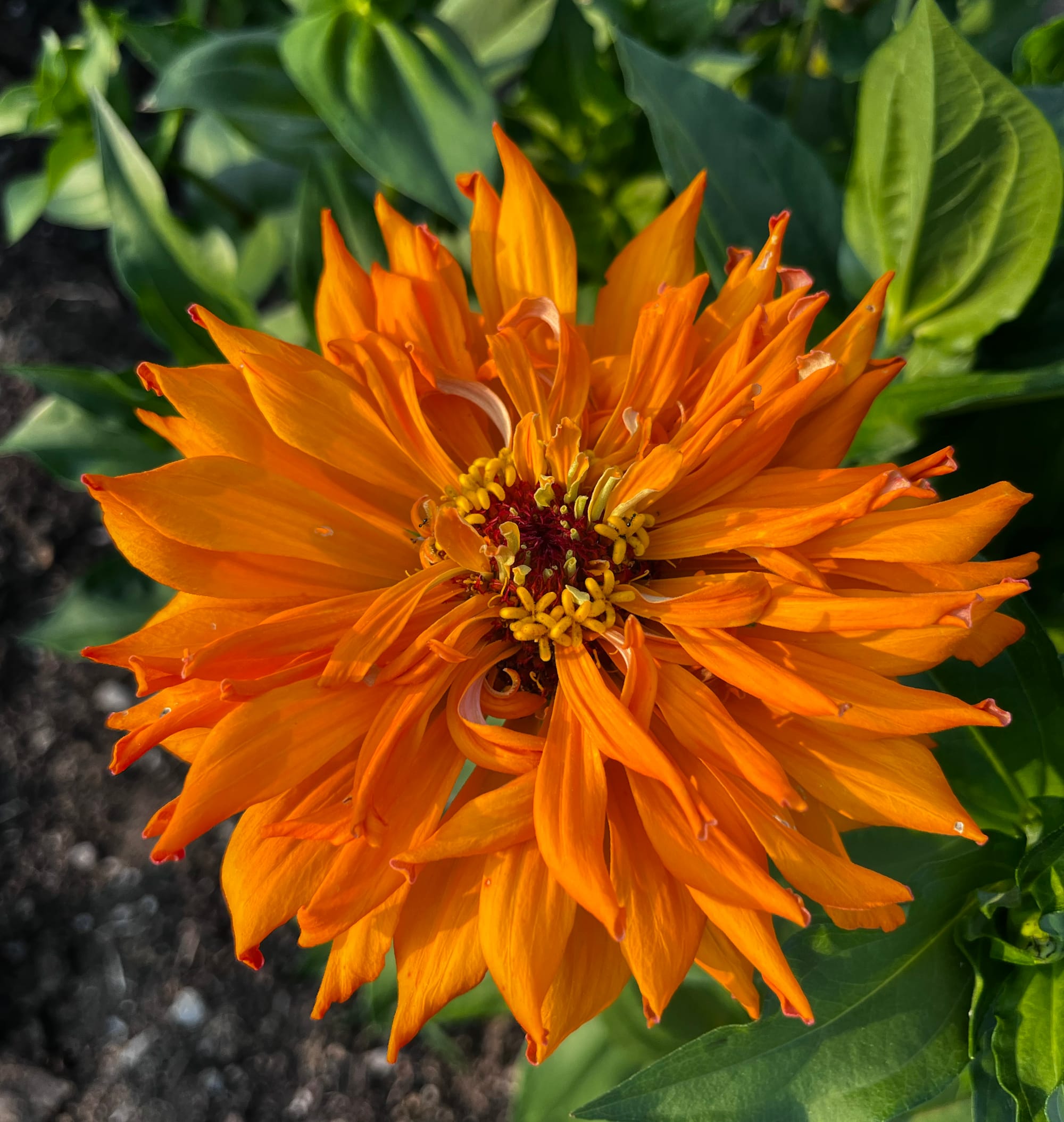

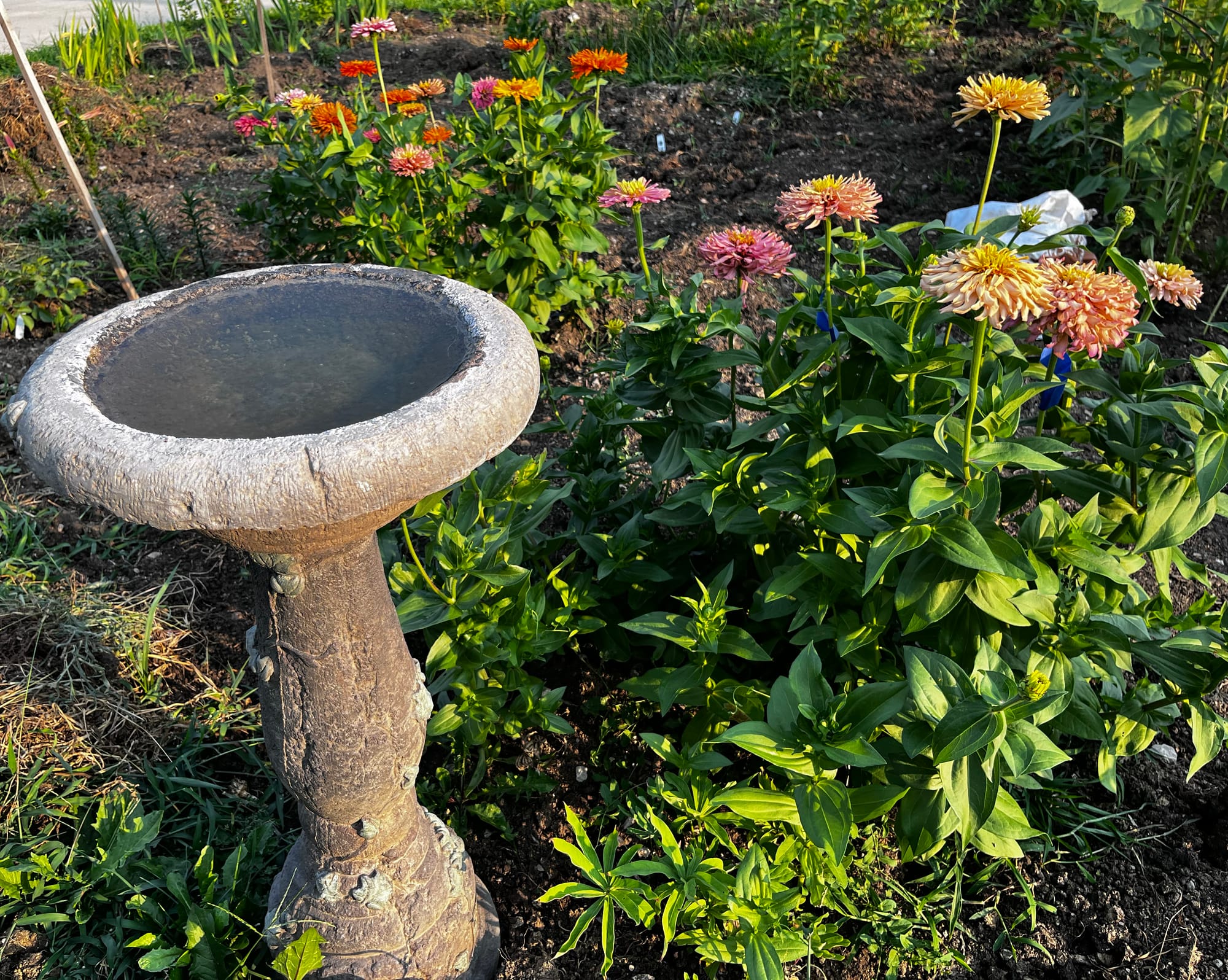
New blooms appear every two weeks or so, creating a continually evolving display. This year, I planted several "waves" of seeds so that as one group of zinnias begins to fade, a new group takes over. I don't usually do much deadheading since I save the seeds. I've planted enough zinnias this year that I should have blooms all the way until frost this fall.
© Copyright Terry Aley
The Aley Acres seed shop on Etsy.
Dahlias, Notes from a Gardener book on Amazon.
Floral Art and Landscape Painting Etsy shop.
TikTok, some gardening posts.
